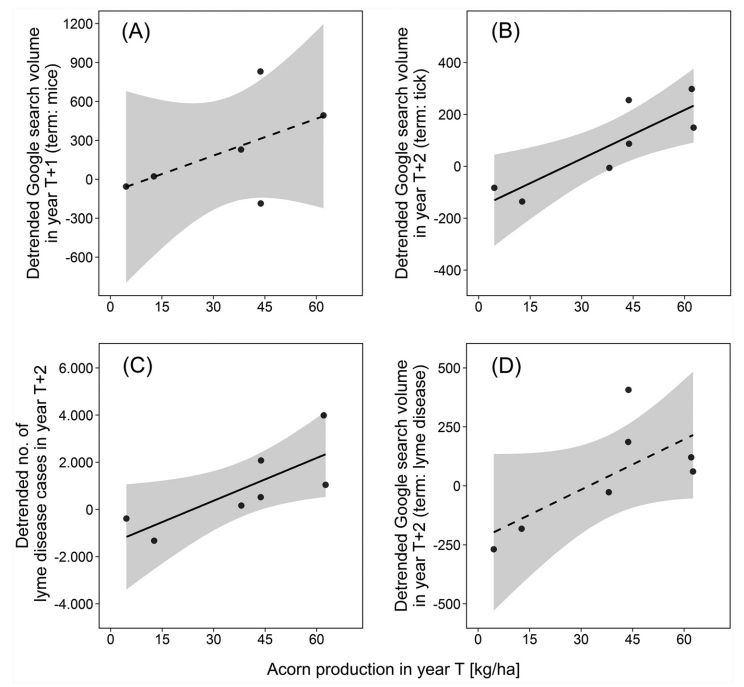We (me and Jakub) have just published a new paper that describes the relationship between oak acorn crop and Lyme disease risk! This is the first evidence that such link works in Europe.
Previous extensive work was done by Richard Ostfeld and his lab in temperate forests of eastern United States. The chain of reactions described by them in multiple papers goes as follows: 1) Big acorn production (in year T) by oaks drives the eruption of small mammals numbers next year (year T+1). 2) Numerous population of rodents creates paradise for tick populations. This is becouse rodents are not so efficient groomers and most of the ticks survive feeding. 3) Small mammals are good reservoir of the Borrelia spirochete (a bacteria that cause Lyme disease). 4) Becouse of 2) and 3) in year T+2 there is a lot of ticks that have the bacteria. So, not only you are more likely to get bitten by a tick. The tick is also more likely to transfer the bacteria!
We tested whether such relationship existis in other systems (in Poland) using already available datasets: number of Lyme disease cases, size of oaks acorn crop and Google Trends data. We use the last one to see if the chain can be seen in the number of queries typed in the Google. For example, people are typing “tick” into Google more often two years after a big acorn crop! We believe that it is becouse there is just more ticks in the environment at that time.
Read the detailed story here!

7 Comments
Comments are closed.